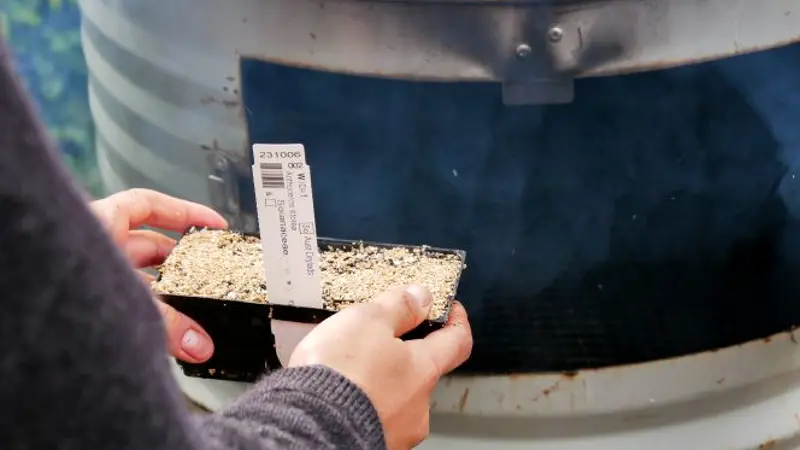
Where there's smoke ...
"Fifty of the 340 seed species sourced for the Australian Drylands required smoke pre-treatment to germinate. Karrikin 1 is a type of molecule found in smoke from burnt plant material. It helps stimulate seed germination, especially in plants from fire-prone areas, by mimicking the chemical signals of fire, breaking seed dormancy and promoting growth. Previous attempts using products such as liquid smoke gave undesirable results, so I designed and built a 'seed smoker' from a 44-gallon drum.
Seeds were sown into punnets and placed in the smoker. This produced excellent results and the smoker now serves as a permanent piece of equipment in the Nursery."
— Nicoletta Centofanti, Horticulturist (Nursery), Royal Botanic Gardens Melbourne








